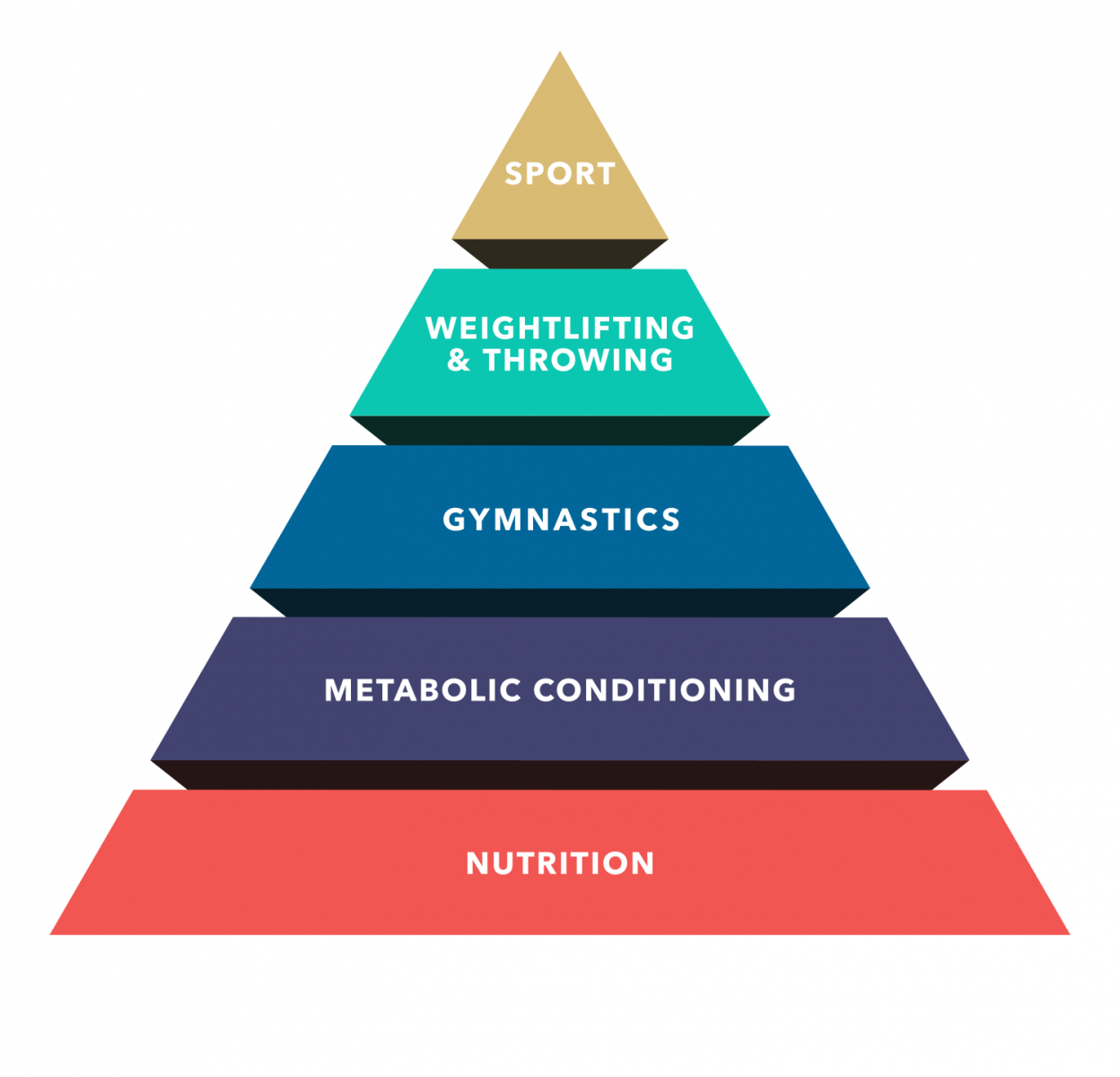While computers, machines, devices and all available tools and technologies – that we can think of, play a vital role in augmenting human living experience, and enabling social and economic growth; let’s not forget that all these tools and technologies were created by human beings (using their cognitive abilities) in the first place. Therefore, an understanding of human cognitive or thought process is pivotal to create and deliver value in any form, manner or shape.
In this regard, Bloom (1956) pioneered a taxonomy of educational objectives often termed as ‘hierarchy of thought’ which provides a structure around the human thought process. The hierarchy comprises six layers i.e. Knowledge, Comprehension, Application, Analysis, Synthesis, and Evaluation (Bloom, 1956).
While defining the taxonomy, Bloom (1956) emphasized that the layers in the hierarchy can be conceived in many different arrangements but it is expected that objectives to be achieved at a particular layer in the hierarchy will be built on behaviors developed in the preceding layer(s) of the hierarchy. As such, knowledge acquisition should enable comprehension which leads to application of comprehended knowledge to a known or a new situation. The experience from application would facilitate analysis by building an understanding of underlying relationships among the constituent parts/elements of phenomenon or thing being analyzed. Such an analysis will result in synthesis and finding new meaning or patterns of thoughts. The highest layer in the hierarchy is to evaluate and make judgement about the value of the output from the process carried out at the lower levels in the hierarchy. In short, the entire process of thought development is to create value in some form, which is very important for growth and prosperity.
While this conceptualization has been debated in the literature just like any other scholarly work, nonetheless it provides a very sound mechanism and a framework for understanding thought process. Such an understanding could provide significant leverage to achieve full benefits of human cognitive abilities for growth and prosperity.
From an organizational perspective, by capitalizing on the use of ‘hierarchy of thought’ process, organizations can improve decision-making, problem-solving, creativity and performance of tasks, just to mention a few. Particularly, project organizations, being the value-driven knowledge-intensive entities, can benefit significantly.

Then the question is: in what way the understanding and use of ‘hierarchy of thought’ process can help improve value delivery in projects? To answer the question, below we look at some areas – keeping in view the impact in terms of value delivery – that can potentially benefit from optimizing the human cognitive capabilities by embracing ‘hierarchy of thought’ approach. Obviously, the areas identified below are just few of the many that can benefit from paying more attention to ‘hierarchy of thought’ process, as human cognition is the common denominator of success of all activities – project-based or otherwise.
- Harness creativity
Projects are creativity-driven entities. People working on projects need to possess capabilities that enable creating new things as per client needs. The use of a ‘hierarchy of thought’ approach could be very useful to harness creativity. Project organizations could use the approach to instil behavioural tendencies among their staff to seek or acquire knowledge which is a precursor to comprehension, application, analysis, synthesis and evaluation to harness creativity.
According to Bloom (1956), the knowledge acquisition can be about many things such as: terminology, facts, conventions, trends and sequences, classifications and categories, criteria, methodology, principles and generalizations, and theories and structures. Understandably, not everyone in the team would be able to have all the knowledge, yet it seems imperative that dedicated efforts be made to help people gain as much knowledge as possible to kick start the process of understanding, application, analyzing and building value.
Obviously, project organizations cannot afford to spend a lot of time on knowledge building process alone given the various constraints, but by taking simple steps knowledge flow can be enhanced. Some possibilities include having 10-15 minutes post-lunch knowledge-sharing stand-ups, inclusive brainstorming sessions, putting a book-cum-Mag stand near coffee machine corner and establishing a digital repository of interesting knowledge can help people get on the path of seeking knowledge. If there are choked channels that stop knowledge from flowing smoothly, those need to be cleared as well. Doing basic, simple things is all what is needed.
- Build scenarios and identify alternatives
One of the key capabilities that project staff need to have is to be able to see different perspectives. Being able to build scenarios and identify alternatives is very important to value delivery in projects. The ‘hierarchy of thought’ provides a useful mechanism to instill analysis, synthesis and evaluation behaviors among project staff so that they are able to construct scenarios, see different sides of a situation, identify alternatives and come up with useful solution(s) that help create value for the client.
Project organizations can consider a number of possibilities following mechanism provided in the ‘hierarchy of thought.’ Some of such possibilities could be doing simple things like assigning people with scenario development experience as mentors to transfer knowledge to other team members, organizing mock-scenario development sessions, running online competition(s) for hypothetical scenarios and involving project staff to suggest alternative solutions. These simple steps will help project staff learn to analyse, synthesize and judge value of alternatives.
- Judge and justify changes
Effective Change management is important for all sized projects, but particularly vital for large size projects. Failure to manage changes could have significant negative impact on the successful completion of project. Change management requires all the capabilities defined in the ‘hierarchy of thought’. Project staff need to possess knowledge, comprehension, understanding of application, analysis, synthesis and evaluation capabilities to be able to judge and justify changes.
Adopting ‘hierarchy of thought’ approach could be very useful as it will help the project organization be better prepared for managing changes effectively. Understanding of the approach will also be useful to identify staff who possess most of the capabilities i.e. knowledge, comprehension, analysis, synthesis and evaluation, and assign them to change management team.
- Predict issues and risks more effectively
Risks identification and management is an area that often gets little attention. It requires many of the capabilities defined in the ‘hierarchy of thought.’ Just having knowledge is not enough to identify and manage risks. It requires comprehension, analysis, synthesis and evaluation. Therefore, project organizations need to build capabilities that facilitate high order thinking behaviours among staff to be able to manage risks promptly.
When risks happen, they become issues. Once issues happen, they require to be understood, analysed, evaluated and managed. It again shows that more emphasis is needed on building cognitive capabilities within the project teams, using the ‘hierarchy of thought’ approach.
- Interpret user experience (UX) driven needs
Having an ability to interpret and understand needs considering User Experience (UX) is vital to create value in projects. Understanding and interpretation of UX require a lot more just the knowledge about the product needs, environment and the potential functionalities. Analysis, synthesis and evaluation are critical steps in the interpretation of needs considering UX.
Project organizations should make efforts to develop higher order thinking capabilities by sharing stories of UX and inviting staff members to interpret the good and bad experience, sending staff to short courses on UX, and doing seminars on UX that provide understanding about how to analyze and interpret UX can help strengthen cognitive capabilities as per ‘hierarchy of thought’ approach.
- Convert obstacles into opportunities
Project staff having capabilities to convert obstacles into opportunities can be a potent force to create value for the client. The competitive business and working environment require non-linear thinking and being able to see different perspectives. As such, it is vital to develop capabilities among project staff which enable them find solutions to problems, suggest ways and means to convert obstacles into opportunities.
Obviously, it is easier said than done. But it is a worthwhile trait that should be developed. Taking ‘hierarchy of thought’ approach could be very useful to inculcate application, analysis, synthesis and evaluation behaviors. One possible way to build some capabilities is to use business games to help project staff learn problem solving and convert obstacles into opportunities.
- Augment knowledge bandwidth of teams
The adoption of a ‘hierarchy of thought’ approach can help project organization augment knowledge bandwidth of project teams. Every human being is different. As such, in hindsight, it is not possible that every team member will be able to possess all the capabilities as defined in the ‘hierarchy of thought’ approach. Therefore, it is vital to make efforts to develop an application, analytical, synthesis and evaluation capabilities across the board. By doing so, it is expected that some people will bring in knowledge, and others will contribute by analyzing, synthesizing and evaluation thus augmenting the overall knowledge bandwidth of the team. Building a shared capability development environment is useful for value delivery.
Concluding thoughts:
Human cognitive capabilities are catalyst for growth and prosperity. Building such capabilities is thus of paramount importance. One of the mechanisms to build these capabilities is to use conceptualization enshrined in Bloom (1956)’s taxonomy of educational objectives or ‘hierarchy of thought.’ The concept provides a very simple but a robust means of building cognitive capabilities among people. From lowest level i.e. ‘knowledge’ to highest level i.e. ‘evaluation’ in the six-level hierarchy, the approach encapsulates a process of how a human being could develop thought to create value.
Given the usefulness of the concept, we have identified some areas and highlighted how using ‘hierarchy of thought’ could help create value in those areas. While doing so, we have also suggested some interventions to develop cognitive capabilities. In hindsight, by paying more attention, taking simple steps, and making dedicated efforts to use ‘hierarchy of thought’ process; project organizations will be able to augment their capabilities and deliver enhanced value to their clients.












Replies to This Discussion